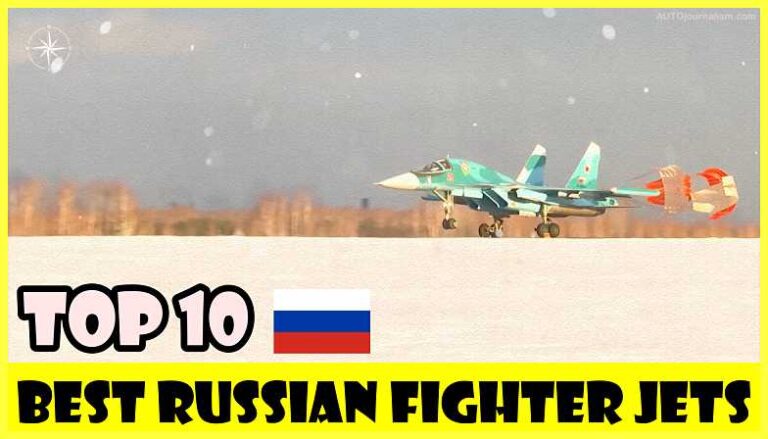Top 10 Russian Fighter Jets ( All Sukhoi and MiG Jets )
Here is the list of Top 10 Russian Fighter Jets, All MiG Russian Fighter Jet and all Sukhoi Russian Fighter Jet, The rise and fall of the Soviet Union, and with it, the rise and fall of Russian aviation marked the twentieth century. Russian or Soviet jets have long been a part of military aviation and are expected to continue to be so. So, let’s take a look at some of the best Russian fighter jets that the old Soviet machine has to offer.
It has been stated that the USA increased military spending, for which it now paradoxically faces its own financial problems, has aided the process. As the Soviet Union’s economy collapsed, much of that military investment went towards fighter planes, particularly those made by the two businesses that controlled Soviet aviation. These two companies continued to dominate Russian Aeronautics and accounted for our whole list. MIG & Sukhoi Military exports, especially fighter jets, were halted after the Soviet Union disintegrated in 1991. Russia’s aviation industry has resurrected. However, despite constructing one of the world’s greatest Air Forces, it became a large supplier to China and former Soviet republics.
List of Top 10 Russian Fighter Jets
10. Sukhoi Su-24 ( Sukhoi Russian Fighter Jet )
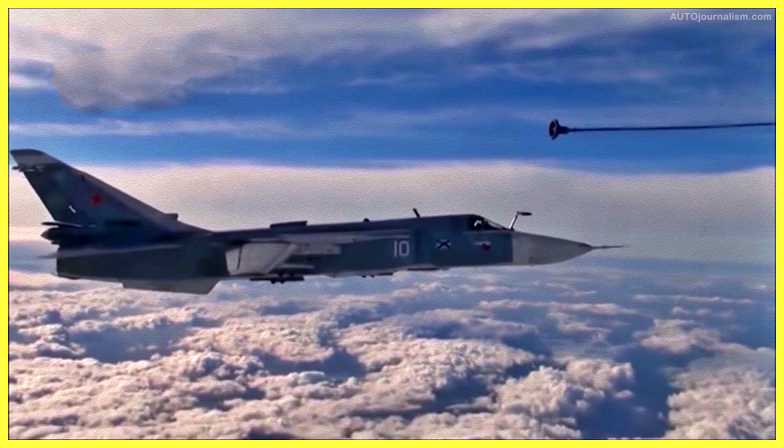
In the mid-1960s, the Soviet Union issued requirements for a low-altitude strike aircraft with short takeoff and landing capability. The sukhoi su-24 fencer was developed as a supersonic all-weather attack aircraft. It has been in service since 1974 and remains in service in several countries in 2021. Sukhoi began construction on the sukhoi s58m, a design that used four ribbons guard e3635 turbojets for short takeoff and landing performance and a tu tumanski r27 afterburner for crews.
T6 was the codename given to the aircraft when it was authorized in August 1965. The first prototype took to the air for the first time on July 2, 1967, without the four lift jets. Lilka al-21f engines had also been installed in place of the r-27 engines. When it was discovered that the space required for the four lift engines filled space ordinarily used for fuel tanks and weaponry, the short take-off and landing capability was scrapped. The first prototype of the T6 featured a fixed-wing design, but the second prototype had a swing-wing design influenced by the American f-111 technology.
The puma navigation and attack system, the orion radar systems, the relief terrain clearance radar, and the orbited 1058 computer were all instrumental in this. The first production aircraft took to the skies in December 1971, but it wasn’t until February 1975 that the Su-24 was formally admitted into service. The su-24’s variable geometry wing allows for excellent short takeoff and landing performance. The top speed of early Su-24s was mach 2.18, but after a modification of the intakes to decrease weight and maintenance, the top speed was reduced to mach 1.35, which was considered acceptable because the Su-24 is almost exclusively utilized for low-level missions. The aircraft is armed with a single gsh-623 gun, which is positioned on the underside of the fuselage.
It can carry a variety of nuclear weapons as well as r60 infrared air-to-air missiles, as well as laser and television guided bombs and missiles. Anti-ship and anti-radar missiles are two types of anti-ship missiles. The su-24 was used by the Soviet Union in the Soviet-Afghan War in the 1980s, and it was also used by Russia in the Chechen conflicts, as well as the conflict in Georgia in 2008, and in russian military operations in Syria. The Syrian Air Force also used the fencer in the Syrian civil war, and Ukraine used it in the Ukrainian conflict. Approximately 1400 sukhoi su-24s were produced between 1967 and 1993.
9. Sukhoi Su-25 ( Sukhoi Russian Fighter Jet )

The su-25sm attack aircraft is a modernized version of the su-25 single-seat attack aircraft. It has an updated avionics system with the addition of an indicator on the windshield and a multi-function display in the cockpit, as well as a s 13 24 25 rockets and a 30 millimeters gsh-32 autocannon. Later frogfoot models were given the r-73 short-range air-to-air missile.
The addition of uv missile launch detectors in the vidib’s 25 cdcm set and an updated version of the -150 lira pastel improves survivability and anti-missile countermeasures. The targeting package in the nose is further upgraded in the sol 25 module, which includes thermal imaging and increased zoom. The new svp 24 gfist precision dumb bombing system has also been added. The gfist uses precise information about the flight characteristics and position of the aircraft to set a computer-calculated release point ccrp for a bomb, allowing it to deliver a bomb onto a specific grid with good accuracy. Russian media has hyped this system up to allow dumb bombs to be as effective as precision bombs.
This is only true for static targets, and overlooks the various advantages pgms have with the su-25 sm-3 upgrade when it comes to targeting moving targets. In comparison to the 810c, the Russian Air Force now possesses a reliable kit that can convert its fleet of antique Su-25s to a modern level. The su-25s m3 is speedier and has the advantage of having its targeting system stuffed into the nose rather than relying on an external pod; but, because the targeting system is staring out of a small window in the nose, it has a limited range of motion.
The 810c has been employing similar technology for about 20 years and was originally built to use the electro-optical maverick missile, whilst the su-25 has always focused more on laser-guided munitions. Once the electro-optical seeker is locked on the target, the missile will guide regardless of the plane’s velocity. With a laser, the pilot must direct the missile in with a laser designator and keep flying towards the target until it hits altogether.
While the planes are basically comparable, when looking at which sub-systems are more developed, one can observe how the strengths of each plane diverge. The a-10 focuses on the gun and electro-optical pgm delivery, but the su-25 focuses on the precision of dumb bombs and rockets launched from the wings, as well as laser-guided weapons. One of the goals of the modernization of the su-25sm attack aircraft was to make it a relatively inexpensive, repeatable aircraft designed for a large number of wartime pilots. As a result, one of the tasks in modernizing the machine was to reduce the cost of its implementation as well as the cost of retraining pilots and technicians.
8. Sukhoi Su-27 ( Sukhoi Russian Fighter Jet )

The Su-27, or flanker b as it is more commonly known in NATO, is one of the most powerful fighter jets in existence. It is a fourth-generation domestic multipurpose fighter designed for air combat, and one of the things that makes this jet so special is that it is the primary craft of the Russian military and is pretty much drilled over by militaries all over the world due to its effectiveness on the outside. Su-27s are painted in three different hues of blue, often known as standard sky camouflage, with the lower portion of the aircraft painted in a basic light blue.
While the wheel discs in the chassis niches are painted in various shades of green, the chassis racks are painted in a soothing gray. You might be interested to know that the su-27 is a modification of the su-27p, and one of its most notable features is that it is relatively lightweight, weighing only 16 300 kilograms empty. The su-27 has a fuel capacity of 9400 kilos, allowing it to reach a maximum flight height of 22 500 meters and an altitude of 11 kilometers. For speed freaks, the su-27 can reach a scorching speed of 2500 kilometers per hour.
The su-27 is equipped with sdu-10s, giving it unrivaled aerodynamic qualities, especially considering the control system has two operating modes and one emergency mode. As a precaution, the engines on this baby are widely spaced to reduce the chances of both being damaged for a fighter jet worth around $30 million. You may be perplexed that we’ve said so little about the firepower, but don’t worry, we’ve saved the best for last. The Su-27 can detect and target up to ten hostiles at once, then isolate one target at a time and fire two missiles at it. It has a maximum combat load of six tons of ammo, so you can rest assured that this baby can do damage.
7. Sukhoi Su-30 ( Sukhoi Russian Fighter Jet )

The Sukhoi Su-30 has an integrated aerodynamic configuration with thrust vectoring control capabilities, resulting in high maneuverability and unique takeoff and landing characteristics. With a digital fly-by-wire system, this craft can perform some very advanced maneuvers such as the puga chibs cobra and the tail slide. These maneuvers cause the aircraft to decelerate quickly, causing a chasing fighter to overshoot and breaking a Doppler radar lock, when the aircraft’s relative speed drops below the threshold where the signal registers on radar.
Two saturn al-31 f afterburning low-bypass turbofan engines are used in the aircraft’s powerplant, which are fed by intake ramps. With a standard fuel reserve of 5,200 70 kilos, the two al-31f, each rated at 123 KN of full afterburning thrust, ensure a mach 2 level flight with 1,350 km/h of speed at low altitude and 230 m/s climbing velocity. The Su-30mk has a range of 3,000 kilometers and can carry out a four-and-a-half-hour combat mission. At cruising altitudes, an aerial refueling system improves the range to 5,200 kilometers, or a flying time of up to 10 hours.
against targets in the air, on the ground, and on the sea surface Route flights target approach recovery to airfield and landing approach in automatic mode are ensured by automatic control systems that are coupled with the navigational system. The air kick corporation manufactured a modified version of the thrust vectoring su-30mki and mkm versions for the Russian military. The su-30 sm is a four-generation fighter that has been enhanced to meet Russian military needs for radar radio communication equipment. It is equipped with the No.11 M bars radar, Friend or Foe identification systems, ejection seats, armament, and other aircraft equipment.
Using a phased array antenna, frontal horizontal fins, and steerable thrusters for extreme maneuverability, as well as a wide-angle heads-up display, it has a maximum detection range of 400 kilometers and a search range of 200 kilometers. The aircraft can be used to gain air superiority and target ground foes with a variety of armaments, including air-to-air, air-to-surface, and guided and unguided bombs weighing up to 8,000 kilograms. It also has a 30 millimeter gsh 31 autocannon in one barrel, allowing it to operate at great distances from airfields. the ability to refuel in flight
It has a crew of two, a length of 20 1.93 five meters, and a wingspan of fourteen point seven meters, among its statistics. It is six meters tall, with a wing area of sixty two meters squared, and weighs seventeen thousand seven hundred kilos empty. The maximum weight allowed for takeoff is 34,500 kg. With a range of three thousand kilometers at altitude and a service ceiling of seventeen thousand three hundred meters, this vehicle can reach a maximum speed of Mach two at altitude.
While climbing at a rate of 230 meters per second, its armament includes a thirty-millimeter gsh 31 autocannon with 150 rounds, 12 hard points with a capacity of up to 8,000 kilograms, and provisions to carry a variety of rockets including the s8 Kom BM + om, the s 13 tof, and the s 25 OFM pu. It also has a variety of air-to-air missiles as well as general-purpose laser-
6. Sukhoi Su-34 ( Sukhoi Russian Fighter Jet )
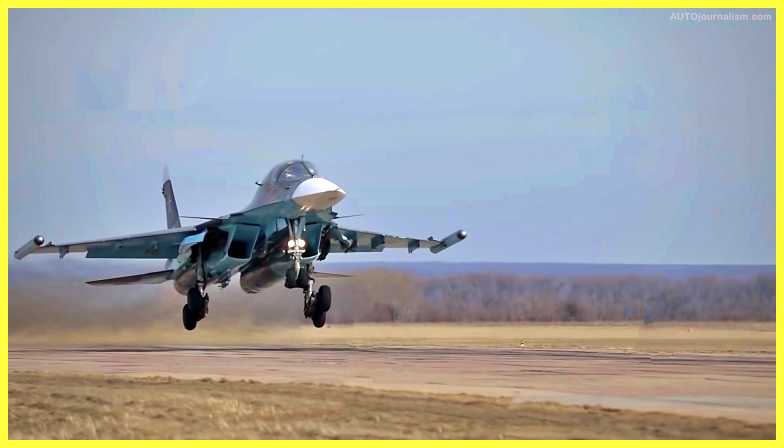
Sukhoi Su-34 Sukhoi Su-34 Sukhoi Su-34 Sukhoi Fullback is a Russian twin-engine twin-seat strike aircraft based on the Sukhoi Su-27 flanker that is planned to replace the Sukhoi Su-24. The two-seat Su-34 is primarily designed for tactical deployment against ground and naval targets on single and group missions in good and unfavorable weather circumstances, in hostile environments with counter fire and AW countermeasures deployed, and for aerial reconnaissance.
The su-34 is powered by two Saturn al-31 fm1 turbofan engines, the same engines as the su-27 sm, which give the aircraft a top speed of Mach 1.8 or greater when fully loaded. The su-34 has a maximum range of 4,000 kilometers without refueling when fully loaded. The Su-34 has 12 hardpoints for 8,000 to 12,000 kilos of payload. The aircraft’s nose and forward fuselage have been completely redesigned. It retains the ability to load r-77 air-to-air missiles and r-73 cruise missiles, as well as the su-27 and su-30 s 30 mm gsh 31 cannons.
With a maximum munitions load of 4,000 kilograms and a maximum attack range of 250 kilometers, any single munition carried has a maximum weight of 4,000 kilograms. The su-34’s most distinguishing feature is its exceptionally large flight deck, which is a benefit of the side-by-side cockpit in that duplicate instruments are not necessary for each pilot because long missions necessitate comfort. The pressurization system also enables operation at altitudes of up to 10,000 meters without the use of oxygen masks, which are available in emergency and battle scenarios.
The electronically scanned array forward radar’s maximum detection range is 200 to 250 kilometers, while a 2nd aft-facing radar is fitted to cover the rear. The main radar can simultaneously attack four targets. The rear warning radar systems can detect an attack from behind and allow the aircraft to fire its seventy-threes at pursuers without having to turn the plane. The in zero twelve is the unofficial name for the rear radar.
5. Sukhoi Su-35 ( Sukhoi Russian Fighter Jet )

The su-35bm, the penultimate item on this list, is one of the world’s most effective fighters. It belongs to the highly regarded 4+ generation, which means it can quickly maneuver to kill both airborne and ground targets. The su-35 is a reconnaissance aircraft that can fly up to 3 600 kilometers using two al-41f1s engines that can reach supersonic speeds without using afterburners. However, it does use an antiquated electromechanical control model. The cockpit of the su-35 features three screens to help with workflow. on the windshield, a holographic indicator
combined with an advanced information control system and the n-035 Earbiss radar with effective epr capable of detecting targets up to 400 kilometers away, as well as 12 suspension units and the ability to carry up to 8 tons of shells It’s simple to see why a single unit of this aircraft fetches such a high price of $85 million.
4. Sukhoi Su-57 ( Sukhoi Russian Fighter Jet )
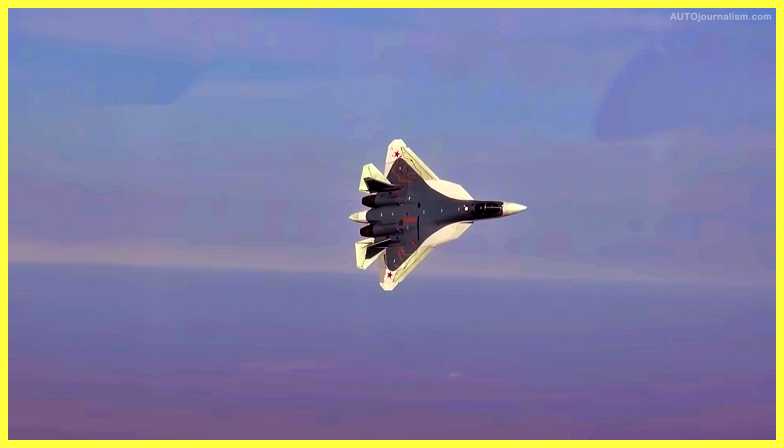
The su-57 was created as a partnership between the Sukhoi Design Bureau and the Russian Aircraft Corporation as an improvement over the Su-27 since it required roughly four times the number of parts. It took to the skies for the first time in August 2019, and since then, its multifunctionality, maneuverability, and blinding speed have continued to surprise enthusiasts and casuals alike. Even though this heavyweight aircraft weighs roughly 18.5 tons when empty, it manages to be rather unobtrusive.
Its profile was deliberately engineered to limit visibility, and the aircraft’s structure uses composite materials to reduce the difficulty of flying due to its lower overall weight. It is powered by al-41f1 engines, which allow the Su-57 to fly at supersonic speeds without using an afterburner. When you mix in enhanced flow characteristics, a fully digital control system, and higher traction, it’s easy to see why this aircraft has earned its reputation.
The Su-57 is no slouch when it comes to firepower, as it has demonstrated a terrifying ability to hit both ground and air targets with pinpoint accuracy. It has a maximum combat load of 10 tons, with shell placement at 16 points of the suspension, eight internal and eight external, and will set you back around 42 million dollars for a single unit.
3. Mikoyan MiG-29 ( Russian Fighter Jet )
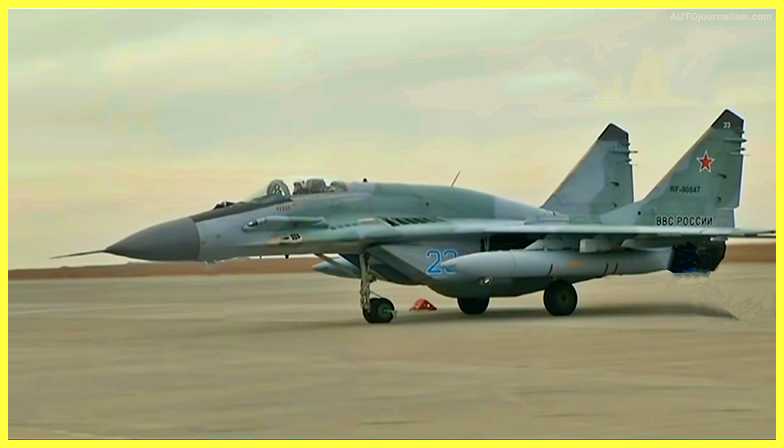
The mig-29 is a twin-engine firefighting aircraft designed in the Soviet Union. It was developed by the mikoyan design bureau as an air superiority fighter in the 1970s, alongside the larger su-27, to face emerging American fighters like the f-15 and f-16s. In 1982, the Soviet Air Forces accepted the mig-29 into service. The mig-29 has also been a popular export aircraft, with more than 30 countries operating or having operated the aircraft to date. Early mig-29s were exceptionally nimble aircraft, capable of rivaling the performance of modern fa-18 and f-16 aircrafts.
However, because to their low fuel capacity, they were limited to short-range air defense operations where they lacked hands-on throttle and stick control as well as an inter-aircraft data link, necessitating a fairly extensive heads-down approach to cockpit controls. Later mig-29s were upgraded to improve their capabilities, including improved engines glass cockpits with hot-ass compatible flight controls modern radar and irst sensors and considerab
Still, the mig-29, while capable in close range dogfights, lagged behind in terms of weapons load capacity and combat range in comparison to western fighters such as the f-15, fa-18, and raphael’s. The mig-29 has been manufactured in several major variants, some of which are based on the original old airframe, such as the mig-29 smt and mig-29upg, while others are based on the upgraded airframe.
The mig-35 was built based on this modified airframe, including the multi-role mig-29m and navalized version mig-29k. The mikoyan’s multi-role versions, particularly the carrier-based version mig-29k, were never produced in considerable quantities. The mig-29k was assigned to aircraft carriers of the Indian and Russian navies.
2. Mikoyan MiG-31 ( MiG Russian Fighter Jet )
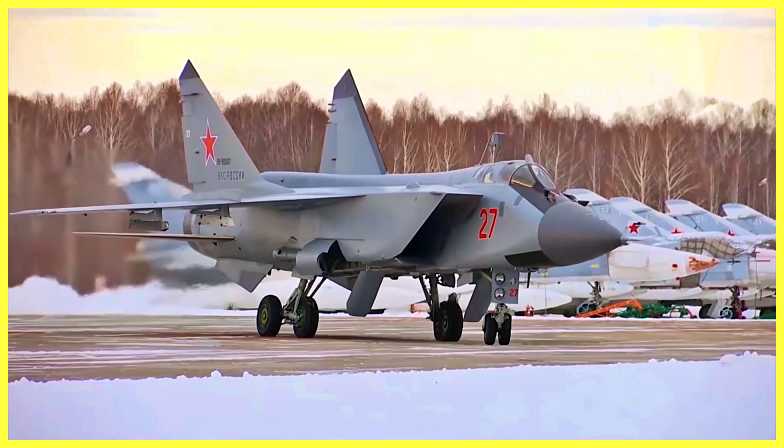
The Mig-31 is a fourth-generation supersonic fighter interceptor that seats two people and rules the sky. This high-flying devil can battle its foes for the longest duration at an altitude of 20 kilometers and speeds of up to 3000 kilometers per hour. The mc31 was the only airplane having a phased array radar. It has a normal aerodynamic design with a high-sat trapezoidal wing, a two-kilo vertical, and a fully turned horizontal tail with missiles tucked into the hull. One of the most amazing features of the mig-31 is that the fuselage is 50 steel and 33 aluminum.
While the aircraft’s nose is made of aluminum alloys, the effect of these lightweight components is reflected in the aircraft’s overall weight, which is just 21 tons and can carry up to 16 300 kilograms of fuel and a 5 000 kilogram additional load. It has a 2d 30f6 engine with a 7-module motor that weighs 2 400 kilos. The fuselage holds seven gasoline tanks, with extra fuel storage places on the wings and in the two keel tanks. This motor is composed of titanium steel and nickel alloys, which contribute to its extreme toughness and durability. Despite this, refueling is always done centrally and on the su-24t or il-78, it can be done in the air.
The mig-31 has radar detection capabilities ranging from 180 to 320 kilometers, as well as the capacity to monitor 10 hostiles automatically. The mig-31bm version contains r33c and r37 missiles that can simultaneously hit six targets, while the argon k version picks four targets that are simultaneously directed by four r33 guided missiles. It also has a radar for passive viewing and issuing instructions to guided missiles r40td and r60 with a thermal homing head. However, you should stop drooling because each unit of this mig-31 will set you back $33.2 million dollars, demonstrating the russian military’s wealth as they have 400 of these bad boys.
1. Mikoyan MiG-35 ( MiG Russian Fighter Jet )
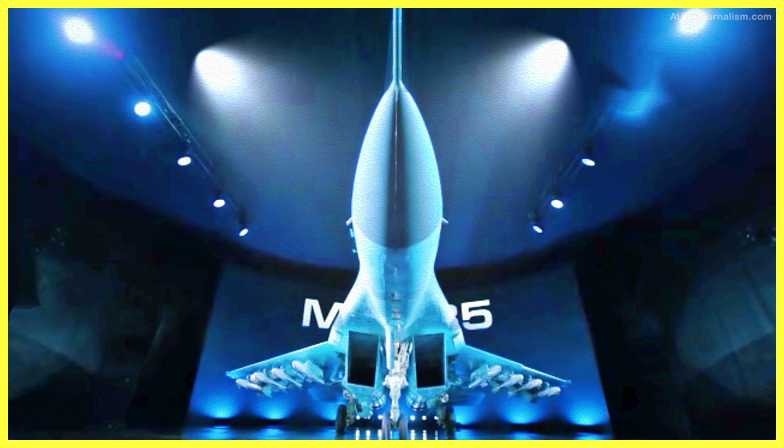
The Mig-35 is a member of the four-plus-plus generation of aircraft designed to rule the sky. It is noted for its ability to do accurate and effective damage to both ground and aerial targets. It is 17.32 meters in length, 4.44 meters in height, and has a wingspan of 12 meters. Its usual takeoff weight is 19 200 kilograms, but it can be expanded to 24 500 kg to carry up to 6500 kilograms of external payload. Let us now discuss its capabilities. The Mig-35 can attain speeds of up to 2100 km/h and heights of up to 17 500 meters. It can also go a distance of up to 3 500 kilometers.
It navigates with the help of suspended tanks and uses the advanced beetle radar to dual the skies even in the worst weather conditions. It can detect other rival aircraft at distances of up to 200 kilometers while mapping out the surrounding area in high resolution. It has gained popularity for its ability to target up to 30 hostiles at once and can fire at four ground targets or six aircraft simultaneously. electronic systems of the highest quality a combustion chamber that produces no smoke and the capacity to work for up to 4000 hours without needing to be serviced It’s unsurprising that this plane costs around $30 million. It also includes 100 rounds of ammunition and can carry up to eight hanging weapons.
NEXT
Top 10 Future Weapons of Russia
Top 10 Fastest Electric Cars in the World 2022
Top 10 Future Weapons of Pakistan
Top 10 Most Powerful Ship in the World
Top 10 Indian Motorcycles in the USA (Indian American Bikes)
Top 10 ICBM Missile in the World
Top 10 Longest Range Military Drone in The World (UAVs)
Top 10 FASTEST MERCEDES CARS In The World

